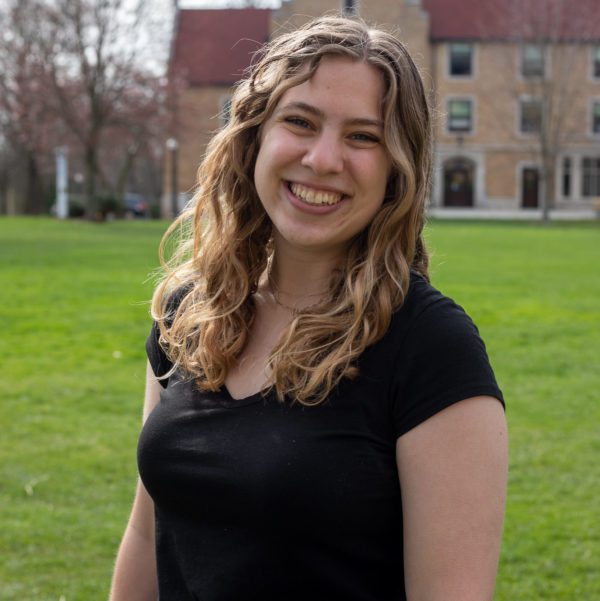
Measurement & Analysis of Pesticide Biotransformation Products in Ohio Precipitation Samples

Name: Lily Anderson
Major: Biochemistry & Molecular Biology
Minor: Mathematics
Advisor: Jennifer Faust; Paul Edmiston (second reader)
Pesticides are the only chemical contaminant that we purposely release in the environment, and they do not just stay on the crops where they are applied. They can rise into the atmosphere, travel through the air, and fall back to Earth in precipitation. Bacteria and other microorganisms are also present in the atmosphere and can break down pesticides before they fall back to Earth in rain or snow. There is not much knowledge on how atmospheric bacteria break down pesticides or on the identity of the breakdown products, called metabolites. I collected rainwater samples and analyzed them for pesticide metabolites using the technique of high-resolution mass spectrometry. I found atrazine and several atrazine-based metabolites. I saw higher concentrations of pesticides and metabolites in May and June than in other months. I discovered that the rainwater samples with higher concentrations of atrazine also had higher concentrations of atrazine-based metabolites, indicating that the degradation process occurs quickly. Now that a few of the pesticide metabolites have been identified, future studies can investigate how they may affect both human and environmental health, connecting my research to the field of public health.
Dr. Melissa Schultz Sustainability and the Environment AwardPosted in Comments Enabled, Independent Study, Symposium 2023 on April 14, 2023.
13 responses to “Measurement & Analysis of Pesticide Biotransformation Products in Ohio Precipitation Samples”
Related Posts
Related Areas of Study
Mathematics
Numbers + patterns + structures multiplied by a zest for analysis and inquiry
Major MinorBiochemistry & Molecular Biology
Biology and Chemistry combine in an interdisciplinary program for students with a passion for molecular events.
Major


Hi Lilly,
I am so delighted to see your senior research project and know that the last four years have been fruitful and meaningful for you. I am hoping to actually watch your presentation. I would really enjoy knowing from you more about your Wooster experience. You can email me at: collegeconsultantsc@gmail.com
Let me know what your future holds!
Dr. O
Congratulations, Lily, on completing your IS project! Your research is interesting, even if I don’t fully understand the methods. So proud of how hard you have worked and can’t wait to see what happens next for you!
Great project Lily! Congratulations on completing your IS project after all the hard work and dedication you put into it!
Lily – Such a relevant project with important implications for this community (and many others, too).
Wishing you very well on symposium day!
Congratulations, Lily! I’ve heard about other pollution studies from Prof. Faust’s students in the past, but now I’m curious about the atmospheric microorganisms. Do they tend to hang out up there or do they cycle in and out with weather and precipitation?
Awesome work, Lily. Congratulations!
I love your work! What was the hardest part of doing this study?
Great work!! Were there any surprising results or outcomes during the course of your research?
Congratulations, Lily, on completing all the work required of this amazing project. Great job on your scientific process and providing a sound basis for further studies. Congratulations too on receiving the Dr Melissa Schultz Award, a very well deserved honor.
I learned a lot about the chemicals on rain water that I hadn’t thought about before. Thanks for sharing your research, Lily!
Thank you, everyone, for your comments! To answer some questions:
Atmospheric microorganisms can cycle in and out with weather patterns, but they can remain in the atmosphere for weeks at a time, too. They can also replicate while in the atmosphere!
The hardest part of my study was dealing with technological issues. The software I used crashed a few times, and the developers are all based in Germany, so I had to navigate communicating across time zones and a language barrier!
The most surprising result was that I only confirmed the presence of atrazine-based metabolites even though I looked for metabolites from the 10 most commonly used pesticides in Ohio. Future work should focus on adjusting the methods to try to find out more about the other nine pesticides!
Your poster is amazing and easy to read! It really shows that less is more and is inspiring for my future poster. You mention that the software developers were located in Germany which complicated things. Are there programs based in English countries? If so are there specific reasons as to why they were not used?
Nice work, Lily -congratulations!